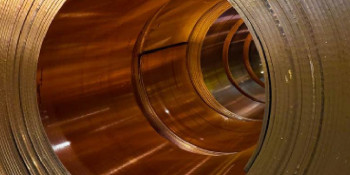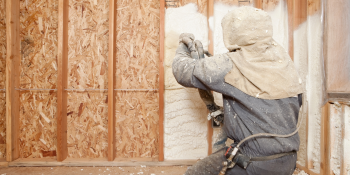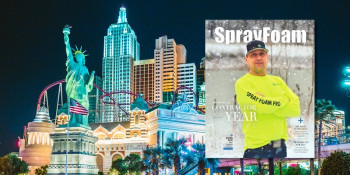Q&A Forums
Straight lines cracks in foam from high wind Post New Topic | Post Reply
| Author | Comments |
|---|---|
|
Dennis Davidson
Posted: May 22, 2011 08:09 AM
|
Straight lines cracks in foam from high wind
MasonCustomer has a metal building 60X100, 18'h, 4/12 pitch with existing 1"+ foam on the interior. The building experienced a mini burst of wind (not quite a tornado) with the doors at each end open. According to witness inside the building at the time, the roof bellowed outward during the high winds. After the storm they noticed straight line cracks in the foam along the perlins in the ceiling only and the roof started leaking. I've seen this "straight line cracking" in metal buildings before in Florida after a hurricane and I've had a second opinion from a spray foam professional who agreed the cracks were caused from the wind. Do you know of any documentation or photos regarding this "straight line cracking" occurrence? |
|
mason
Posted: May 22, 2011 08:56 AM
|
MACs, I do not have any photos of the cracks you are referring to. However, I have observed them when I was living in South Texas in the 70s and 80s. We frequently had winds in excess of 70-80 mph on an annual basis that did not create those problems. But we also had micro-bursts (also called wind shears) that could cause winds in excess of 150 mph. These winds could cause cracks in the foam when installed at 1 inches. The windshears in one instance blew more than 40 mobile homes into a resaca (irrigation canal). Our fix was to use a slightly higher density foam and to spray minimum 1.5 to 2 inches of foam. That seemed to work. Are they looking for a recommendation to fix the problem? If so, you can cut the cracks back to the substrate at a 45 degree angle, installed additonal foam to the crack area. Then add another inch of foam. You can also spray the outside of the building. We did this to a recreation building at this same trailer park that had the mobile homes blown into the resaca. The recreation building withstood 2 class 2 & 3 hurricanes after installation 1.5 inches of 2.5 pcf foam to the outside of the structure. I can send you a report I made of this building as part of Hurricane Dolly investigation that was presented at the Roofing Industry's Committee on Weather Issues symposium in 2009. It shows after 2 hurricanes only one small crack about 1.5 ft long. |
|
Dennis Davidson
Posted: May 23, 2011 06:39 AM
|
Thank's Mason What I was looking for was any documentation or some evidence that the cracks could occur from high winds. I know it and you know it but the insurance company and their engineers are disputing it. I have proposed putting the foam on the exterior but the idea was rejected. I've also proposed spraying additional foam over the existing foam. But being that insurance companies do things their own way regardless of right or wrong, they are saying the IF they were to approve anything it would be to completely remove all the roof including the metal decking and all the spray foam replacing it with all new materials. If that's what is approved that's fine, I can do that, but I'm not one to advocate throwing money away. |
|
mason
Posted: May 23, 2011 08:09 AM
|
Would an opinion letter from me and one from Rick Duncan of SPFA help? |
|
Dennis Davidson
Posted: May 23, 2011 05:56 PM
|
Thank's Mason, I'm sure a letter from another spray foam professional would help to influence their decision. Not just for my customer or the potential for my company to gain a project but to educate the insurance company. What the insurance company doesn't understand is had the foam not been installed the building might have sustained far more damage from the wind burst. |





























